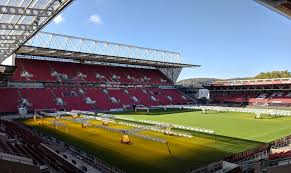Exploring Ashton Gate Stadium: A Hub of Sport in Bristol

Introduction
Ashton Gate Stadium is a pivotal landmark in Bristol, England, serving as the home ground for both Bristol City Football Club and Bristol Bears Rugby Club. The stadium is not only a venue for sports but also a significant contributor to the local economy and community spirit. Its recent renovations and upgrades have solidified its role as a centre for sporting excellence and entertainment in the region.
Historical Significance
First opened in 1887, Ashton Gate Stadium has undergone numerous developments throughout its long history. Originally, the venue was primarily used for football matches and hosted its first-ever match on 1st September 1889. Since then, it has expanded to include a capacity of approximately 27,000 seats after recent renovations completed in 2016, which introduced modern facilities to enhance the experience for both players and fans.
Recent Developments
In recent years, Ashton Gate has seen substantial investment aimed at modernising the stadium. The introduction of new hospitality suites, improved seating arrangements, and upgraded technology not only enhances match-day experiences but also allows the stadium to host a variety of other events, including concerts and community gatherings. These improvements are crucial as they position the stadium as a versatile venue, thereby increasing its revenue and importance to the city.
Community Impact
Ashton Gate Stadium plays an integral role in the community, offering various outreach programmes and sports initiatives aimed at encouraging local youth to engage in sports. Its partnership with schools and local organisations reflects a commitment to promoting healthy lifestyles and providing opportunities for young athletes to develop their skills. Additionally, the stadium has been a crucial location for charity events and community celebrations, making it a vibrant hub for Bristol residents.
Conclusion
Ashton Gate Stadium stands as an emblem of sporting culture in Bristol, beautifully blending its rich history with modern advancements. As the stadium continues to evolve, it remains an essential part of the local landscape, providing entertainment and community engagement. Looking forward, its ongoing developments and strategic partnerships position it well to adapt to future challenges and opportunities, ensuring that it remains a key player in the region’s sporting and cultural life.
